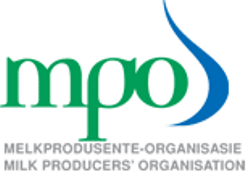
Improved weather conditions beneficial for SA winter wheat
- South Africa’s 2020/21 winter wheat season had a bad start because of dryness. The Western Cape, which generally accounts for two-thirds of South Africa’s winter wheat plantings, experienced a roughly three-week delay. At the time, the Crop Estimates Committee (CEC), was convinced that plantings could fall by 2% y/y in the province, and after accounting for unfavourable weather conditions in other provinces, they estimated an 8% y/y decline in national winter wheat plantings for the 2020/21 season.
- But that dim view quickly changed after the first rains enabled farmers to accelerate plantings throughout the Western Cape and other provinces. The various interactions we have had with farmers in the Western Cape suggest that the area planted under wheat could be the same as in the previous season, and it might not have declined as the CEC suggests. We will have a clearer view on this point when the CEC releases its preliminary area estimate data for winter crops on 29 July 2020.
- What is clear at the moment is that sentiment about the 2020/21 winter wheat has improved notably since the start of the season. The recent rains in the Western Cape were particularly influential in improving soil moisture in the fields. If there are good follow up rains in the coming month, it is reasonable to assume that this could be one of the good seasons for winter wheat farmers in the province. There is certainly a case for such optimism if we consider the latest reports from the South African Weather Service (SAWS). The SAWS forecasts increased chances of above-normal rainfall over the south-western and southern parts of South Africa between July and October 2020. The late start of the season means that crops will require moisture for a longer period than usual, hence, the SAWS forecasts are a positive signal for these winter wheat-growing regions of the country.
- It will be a month until we have a sense of how much the latest rains will contribute to overall yields and output, as the CEC will release the production forecast on 27 August 2020. For background, in the 2019/20 production season, South Africa harvested 1.5 million tonnes of wheat, which was down by 18% y/y (Exhibit 1 in the attached file). The country had to increase the volume of imports by 32% y/y to an estimated 1.8 million tonnes to meet the required annual consumption. This is well above the average annual imports of 1.6 million tonnes. About 85% of this volume has thus far landed on South African shores and the rest could arrive before the end of the marketing year which is 30 September.
- The import requirements for the 2020/21 marketing year which starts on 1 October 2020, will be clearer once we have a reliable estimate of the current crop. If weather conditions remain favourable, as the aforementioned SAWS forecasts suggest, we could see an increase in domestic wheat production. Under such a scenario, wheat imports could decline from the estimated 1.8 million tonnes of the current marketing year.
- Fortunately, the global wheat market, which South Africa remains dependent on, is in good shape. The United States Department of Agriculture (USDA) forecasts 2020/21 global wheat production at a record 761 million tonnes, up by 1% y/y. There are, however, reports of dryness in various parts of Europe and the US, which will need close monitoring in the coming weeks, especially if the heatwave starts affecting crop growing conditions.
- In a nutshell, South Africa’s 2020/21 winter wheat production conditions have improved notably from the worrying outlook at the start of the season because of beneficial rains, specifically in the Western Cape. But the country will remain depended on global wheat supplies for half of its annual consumption. The indications on the global front are positive for the 2020/21 wheat harvest, although dryness could become a challenge for parts of Europe and the US.
WEEKLY HIGHLIGHTS
The USDA’s estimate of SA maize harvest is in line with the CEC
- The USDA’s latest update on South Africa’s 2019/20 season painted a similar picture as the CEC. The commercial harvest is estimated at 15.5 million tonnes, which is up by 37% y/y. Meanwhile, the non-commercial harvest is at 543 000 tonnes, which is down by 1% y/y. This means the overall maize harvest for the 2019/20 season is 16.1 million tonnes, which is the second-largest on record. The harvest of this crop is in full swing across the country. In the week of 10 July 2020, about 45% of the expected commercial harvest of 15.5 million tonnes had already been delivered to commercial silos. It is also worth noting, however, that the 2019/20 harvest activity is somewhat behind schedule because of the late start of the season on the back of dryness. There will likely be increased activity in the fields in the coming weeks as weather conditions are generally favourable.
- The domestic maize prices are somewhat reflective of an expected large harvest. On 16 July 2020, yellow and white maize prices were down by 7% and 13% from the corresponding period last year, trading around R2 611 per tonne and R2 521 per tonne, respectively. We think there is still more room for a further decline in prices in the coming weeks, as the harvest gains momentum.
- As previously stated, this large harvest will allow South Africa to remain a net exporter of at least 2.7 million tonnes in the 2020/21 marketing year which started in May 2020 and ends in 2021, up 89% y/y. This is at a time when Southern and East African maize import needs could outpace those of the previous year because of poor harvests on the back of drought and locust invasion. South Africa has also resumed exports to the deep-sea markets such as Taiwan and South Korea, who were not prominent in the 2019/20 marketing year. We could see the likes of Vietnam and Japan appearing on the list in the coming months.
The recent uptick in SA food price inflation could be temporary
- South Africa’s food price inflation accelerated to 4.8% y/y in May 2020, from 4.6% y/y in the previous month. This uptick was mainly underpinned by relative price rises of milk, eggs and cheese; oils and fats, and fruit. Meanwhile, other products’ price inflation slowed and some remained roughly unchanged. In the case of eggs, the sharp demand at the start of the lockdown period was, in part, a key driver of the uptick in prices in May and also the previous month. In terms of oil and fats, South Africa imports a notable share, therefore the weaker ZAR/USD partially supported the prices. We were surprised by a notable uptick in fruit prices as the country has large supplies this year. And we think this could be a temporary blip.
- Overall, our view on South Africa’s food price inflation remains roughly unchanged from what we argued last month. Essentially, what will matter the most for the direction of food price inflation this year are developments in the grains, meat markets, and fruit. These three food categories account for nearly two-thirds of South Africa’s food price inflation basket.
- Firstly, the outlook for South Africa’s grain production is positive, with the maize harvest estimated at 15.5 million tonnes, which are the second-largest harvest on record, as previously stated. Moreover, global wheat and rice prices, which South Africa is a net importer of, could soften in the coming months due to large supplies. The USDA forecasts the 2020/21 global wheat and rice harvest at 761 million tonnes and 502 million tonnes, each respectively up by 1% y/y. The slightly firmer ZAR/USD, and if sustained, bodes well for imported products amid subdued international oil prices.
- Secondly, meat price inflation was subdued in 2019 because of the ban on red meat exports on the back of a foot-and-mouth disease outbreak at the start of that year. This year, the base effect of 2019 will mean that meat price inflation could show a mild uptick. Thirdly, South Africa has had a generally good fruit harvest this year, with the citrus industry recently noting a 13% y/y increase in available supplies for export markets. This could keep prices at relatively lower levels this year. There is also a broad recovery in the production of deciduous fruit, with apple and pear production up by 5% y/y and 1% y/y, respectively in 2020.
- Against this backdrop, we still think that South Africa’s food price inflation could average around 4% y/y in 2020 (from 3.1% y/y in 2019). The upside pressure will largely come from meat; it will mainly be base effects in the case of red meat, and an uptick in poultry products prices on the back of a recent tariff adjustment.
DATA RELEASES THIS WEEK
- From a global perspective, today the USDA will release the weekly crop progress data. This data provides insight into the US 2020/21 grains and oilseeds growing conditions in the wake of reported dryness in parts of the US. On Thursday, the USDA will release the weekly export sales data, which also helps in tracking the agricultural trade activity between the US and China.
- On the domestic front, on Wednesday, the South African Grain Information Service (SAGIS) will release the weekly grain producer deliveries data for the week of 17 July 2020. This covers both summer and winter crops. But the focus is on summer crops which are currently being harvested. The winter crops are still at early growing stages for the 2020/21 season.
- On Thursday, SAGIS will release the weekly grain trade data. In the week of 10 July 2020, about 743 880 tonnes of maize had already been exported, to neighbouring countries, as well as, Ethiopia, Japan, Taiwan and South Korea. This equates to 28% of the seasonal export forecast of 2.7 million tonnes, which is up by 89% from the 2019/20 marketing year because of an expected large harvest. In terms of wheat, South Africa is a net importer. In the week of 10 July 2020, the country’s 2019/20 wheat imports amounted to 1.5 million tonnes, which equates to 85% of the seasonal import forecast.
Published on Friday, 24th July 2020 - 15:53
Recent Posts
disclaimer









